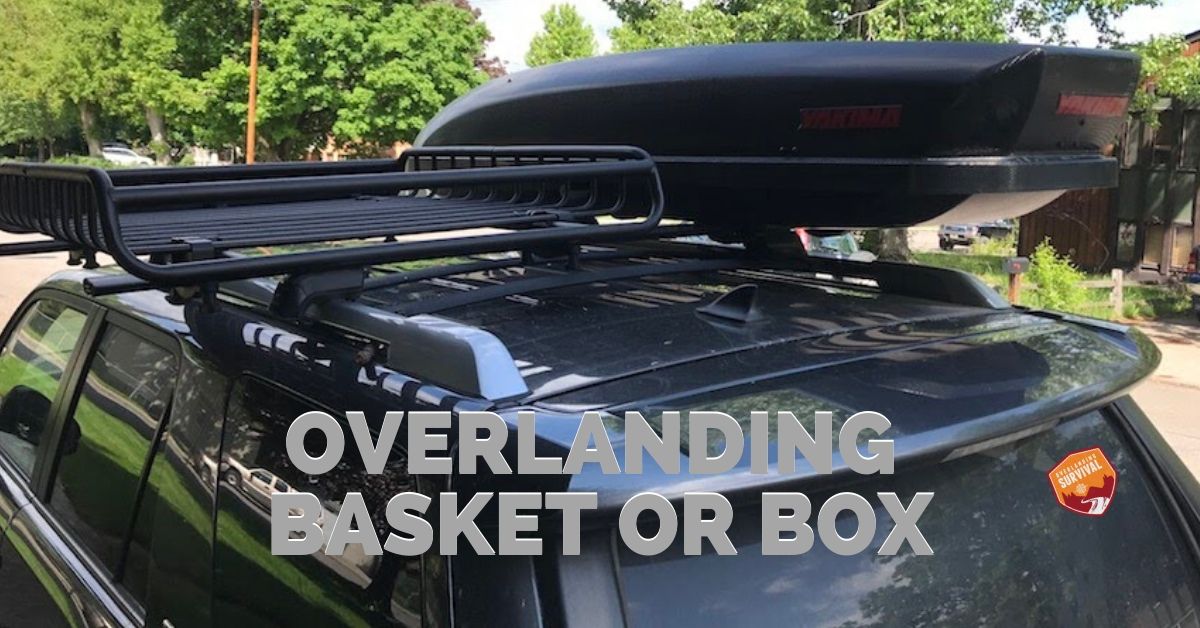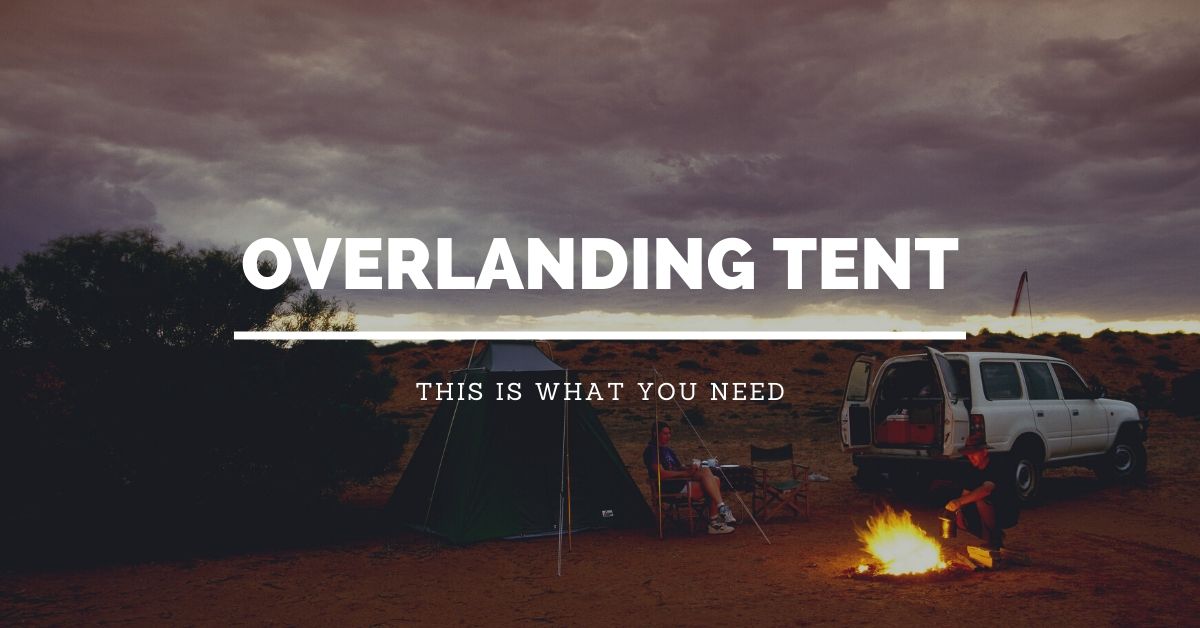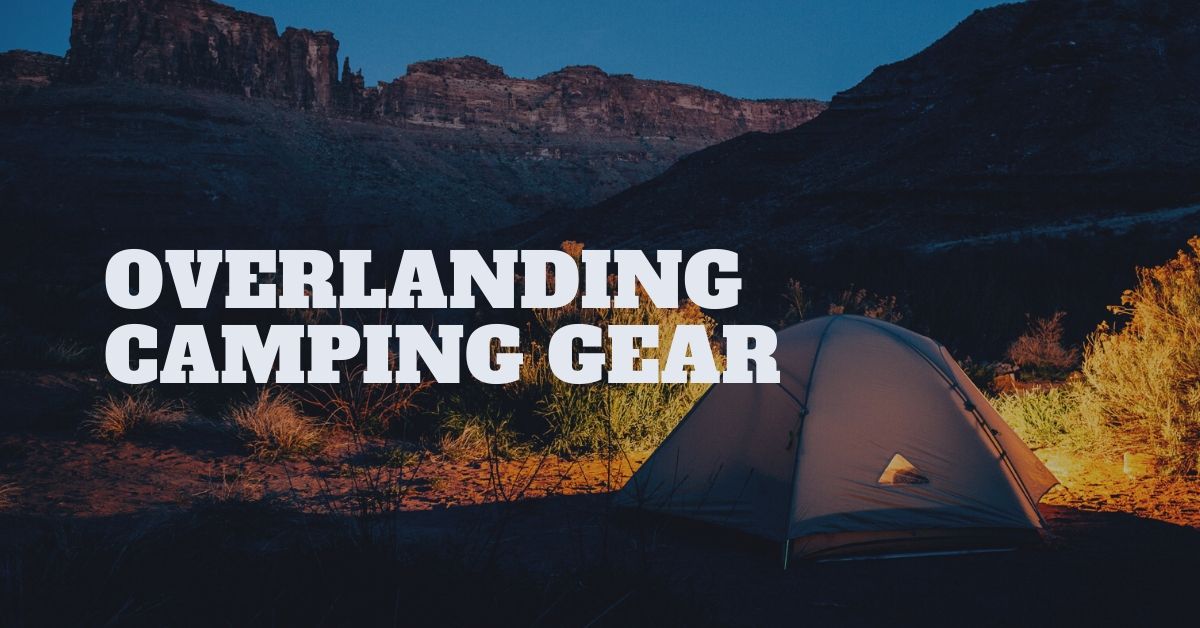When it comes to overlanding, roofspace is some of the most expensive property both in what you put up there, and what you put up there to hold what you put up there. Most overland-worthy vehicles come with what are called “factory bars.” They are two parallel rails running across the roof with crossmembers connecting them. Most factory bars are fairly strong, but as rooftop tents push those limits, it might be time to start from scratch. But for now, let’s talk about rooftop boxes vs baskets.
Overlanding Question: Basket, Box or Both?
First of all, in general both solutions are for storage. One is a fixed volume, and the other is a platform upon which you can pile on the gear and strap it down. The immediate pros and cons of boxes include general waterproofness, light security locks, hides view of contents, fast to operate, aerodynamic, many sizes and shapes, and generally quick to install/remove/switch between vehicles. The drawbacks for boxes include limited storage volume, fixed shape, require a key for entry, can be damaged, made of plastic, not good for gas containers or chainsaws, and higher cost per cubic foot.

Overlanding Basket
On the basket side, the pros include tremendous flexibility for carrying loads, larger load carrying capacity, works with odd-shaped loads, great for gear layering and stacking, low profile when not loaded, easy to attach other accessories, easy to clean when on the vehicle, external carry for gas and chainsaws, and they come in many sizes. The cons of a basket include the wide array of quality (buyer beware), the exposure of contents to the elements and to unsavory characters and animals, may require significant unpacking to get at gear, requires gear to be securely tied down, and may require climbing up onto the vehicle to access gear.
In order to put some together a way to decide whether to get a box or basket, put the decision on a use continuum. As your overlanding moves from less adventurous to more adventurous, your needs are likely to move from box to basket. Assuming you don’t use your roof space for a tent, the amount and type of gear you carry on your roof will increase in size and quantity the longer you must self-support your trip. Either way, when you leave your vehicle for any length of time, all essentials, valuables, and eye-candy should be securely locked and covered inside your rig.
In bad weather, winter, dust, de-iced highways, and mud, expect all contents of your basket to be just as dirty as your windshield. And that can be a real mess. Some solutions include large waterproof duffle bags and even basket-sized bags, but both of those options really turn up the inconvenience factor. Plastic tubs and weathertight Pelican cases are also options, few tubs are watertight, and an array of Pelican cases not only attracts attention, but really ups the cost and weight.

Overlanding Box
Some things to consider. I’ve had a handful of different boxes over the decades, and here’s what I’ve learned. First, you will fill it up so get the biggest one you can. Second, make sure you can open it one-handed. Some designs require two hands a yard or more apart to simultaneously push or twist latches. And having one that opens up both on the right and left side is even better. Another consideration is the flexibility of mounting. Some designs have a smaller range of positioning fore and aft. This can limit the opening height of rear hatches. And the smaller the vehicle, the worse the problem. Another issue may be if the mount can grab the rails or bars on your vehicle. I prefer the screw-down clamps of Thule rather than removable U-bolts. But each year that adapters and mounts get better.
On a side note, I am a stickler for aligning the box with the vehicle roofline. The box shape at 75 miles per hour acts like a sail and can pull your vehicle to the side. A crooked box will apply a lateral force to your vehicle in the best of conditions. As to centering the box, that can depend on if you need side-space next to the box, or you prefer a bias towards curbside (right) opening. When all else is equal, I prefer aligned dead-centering using the rearview mirror as a guide for the front, and the antenna or cyclops light to center the rear. That way if the box shifts or loosens, I will notice even a small movement.
And speaking of box bounce, I often see rooftop boxes bouncing up and down on passing vehicles with play between mounts and bars. Even more, any cross-country trip will have evidence of rooftop rack failure with box parts littering the roadside. Usually that’s the old, broken or cheap boxes, but the stress on the plastic at highway speeds is pretty incredible. Bumpy offroading is also hard on the box, and any dense things inside the box will slosh around banging about.
One thing I truly love about my basket is when camping in the vehicle, I can pile gear that was inside the truck onto the roof. In bad weather, I throw a tarp over it all and bungee cord it down. I have some bungee cargo nets, but find them more hassle than they’re worth. They get tangled, have limited strength, require all points to be stretched and attached, and are slow to hook and unhook. Just my option, however.

Stay Flexible
Overlanding requires predictable and flexible gear storage. Depending on my adventure, I may choose neither box or basket and just use bare Yakima bars. Usually that option is for when I am carrying watercraft like paddleboards or a canoe. On the other end, I can actually fit both my basket and my box on my long Yakima bars. I sometimes even mount my box on top of my basket since the basket has cross bars designed for other rooftop accessories. And finally, if my adventure requires mostly highway driving, I may strip the roof of everything possible in order to improve gas mileage, minimize noise, and lower the vehicle height.
In the end, the external carry options should match both your vehicle and your adventure. Both boxes and baskets are excellent and often necessary choices, and having the option of either is even better. Start with what you want to carry. If you don’t know, then make some trips and see what you need.






